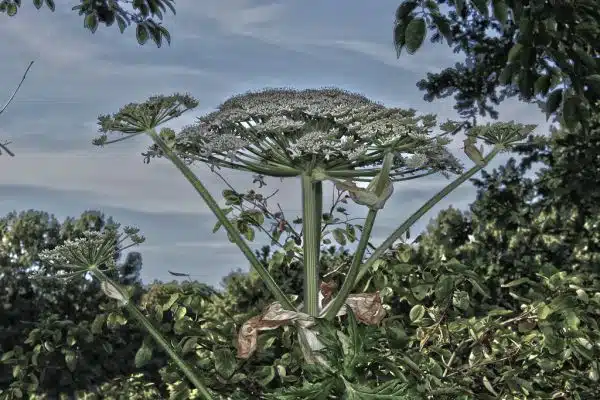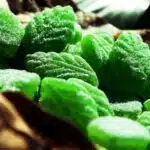The Angelica plant, also known as Angelica archangelica, belongs to the Apiaceae family and is native to Europe and Asia. This herbaceous biennial plant is widely known for its medicinal properties and culinary uses. Angelica plants can grow up to six feet tall and have large green leaves with rounded edges that resemble celery leaves. The plant produces clusters of small white or greenish-yellow flowers that bloom in late spring or early summer.
The Angelica plant has a long history of use in traditional medicine, particularly in Scandinavia and Germany, where it has been used to treat a variety of ailments such as digestive issues, respiratory infections, and menstrual cramps. In addition to its medicinal properties, the plant is also used in the food industry as a flavoring agent for liqueurs, baked goods, and candies. Growing this versatile herb requires proper care and attention to ensure optimal growth and yield. In this article, we will provide a comprehensive guide on how to care for and grow Angelica plants at home or in your garden.
Overview Of The Angelica Plant
The Angelica plant is a biennial herbaceous plant that belongs to the Apiaceae family. It is native to Europe, Asia, and North America and has been cultivated for its medicinal properties for centuries. In addition to its medicinal uses, the Angelica plant also holds symbolic meaning in art and literature.
The Angelica plant has played a vital role in traditional medicine practices throughout history. It was believed to have healing properties for various ailments such as digestive issues, respiratory infections, and skin conditions. Additionally, it was used as a diuretic and a stimulant for the immune system. The roots of this plant were often dried and boiled into tea or made into tinctures.
In art, the Angelica plant symbolizes inspiration, purity, and protection. Its tall stature and delicate flowers make it a popular subject matter in paintings and drawings. Furthermore, it has been featured in numerous literary works due to its symbolism in mythology and folklore. Its presence in art underscores the significance of the Angelica plant throughout human history.
Moving on from the overview of this botanical wonder’s symbolism in art and traditional medicine practices, let us delve deeper into its fascinating history of usage by different cultures around the world.
History Of Angelica Plant Usage
The Angelica plant has a rich history in folklore and traditional medicine. One theory suggests that the name “Angelica” comes from the belief that this plant had divine powers to protect against evil spirits and other supernatural forces. However, there is no concrete evidence to support this theory.
The Angelica plant has been used for centuries in traditional medicine around the world. In Chinese medicine, it is believed to have digestive and respiratory benefits, while in European herbalism, it was commonly used for its diuretic properties. Additionally, Native Americans used the Angelica root as a tea for colds and coughs.
In modern times, research has been conducted into the medicinal properties of the Angelica plant. This research has shown that it may have anti-inflammatory and antioxidant effects, making it potentially useful in treating conditions such as arthritis and high blood pressure. In the next section, we will explore these medicinal properties in more detail.
Medicinal Properties Of Angelica Plant
The Angelica plant has been an essential component of traditional medicine practices for centuries. Folk healers and herbalists have used the plant as a natural remedy to treat various ailments, including digestive disorders, respiratory problems, and menstrual cramps. The plant’s root contains compounds such as coumarins, flavonoids, and polysaccharides that are believed to provide therapeutic benefits.
The Angelica plant is known for its antibacterial, anti-inflammatory, and antispasmodic properties. It has been used to alleviate stomach discomfort caused by indigestion and bloating. Additionally, it is believed to help relieve menstrual cramps due to its ability to stimulate blood flow in the pelvic area. In traditional medicine practices, the plant’s leaves have been used to treat respiratory conditions such as coughs and colds.
Numerous studies have investigated the medicinal properties of the Angelica plant. Research suggests that the plant may have potential in treating conditions such as anxiety, arthritis, and cancer. However, further research is needed before definitive conclusions can be drawn about its efficacy in these areas. Despite this uncertainty, the Angelica plant remains a popular natural remedy in many cultures worldwide.
As we have seen, the Angelica plant has played a significant role in traditional medicine practices for centuries due to its medicinal properties. In the next section of this guide, we will explore another aspect of this versatile plant: culinary uses.
Culinary Uses Of Angelica Plant
The Angelica plant is a versatile herb that can be used in many culinary applications. Its refreshing and slightly sweet flavor makes it perfect for use in desserts and cocktails alike. One can add Angelica plant to fruit salads, sorbets, and ice creams to add a unique twist to the traditional flavors. It can also be paired with chocolate or used as an accent in cakes, pies, or puddings.
The Angelica plant’s unique flavor profile also makes it a great addition to cocktails. The herb is often used as a garnish for many different drinks, including martinis, gin and tonics, and bloody marys. It can also be muddled or infused into simple syrups to create more complex flavors. A popular cocktail that features Angelica plant is the Angelica Sour – made with gin, lemon juice, simple syrup infused with Angelica plant, and egg white.
Overall, the culinary uses of the Angelica plant are vast and varied. Whether one is looking for a way to elevate their dessert game or create a unique cocktail experience for guests; this herb has got them covered.
As we explore the various uses of this versatile herb in culinary pursuits further, it is essential to understand that growing conditions play a crucial role in determining the quality of the harvest. Therefore, let us delve into the growing conditions necessary for cultivating healthy and flavorful Angelica plants.
Growing Conditions For Angelica Plant
Angelica plant is a hardy herb that can thrive in different growing conditions, but it requires some specific environmental factors to grow optimally. Both indoor and outdoor cultivation of angelica plants require well-draining soil and adequate sunlight. However, the temperature requirements vary depending on the growing location.
For indoor cultivation, it is essential to provide the right humidity level and ventilation to prevent fungal diseases. Angelica plant thrives in temperatures between 15-18°C (59-64°F), making it suitable for most indoor environments. It is also important to ensure that the plant receives at least six hours of sunlight daily or supplement with artificial lighting if necessary.
In contrast, outdoor cultivation of angelica plants requires full sun to partial shade exposure and moist soil with a pH range of 5.5-7.0. The ideal temperature range for outdoor growth is 10-21°C (50-70°F). It’s important to note that excessive heat can cause the plant to bolt prematurely or wilt quickly. Therefore, it’s essential to provide plenty of water during dry seasons and avoid exposing the plant to direct sunlight during hot afternoons.
Moving onto soil requirements for angelica plant…
While growing conditions are vital for cultivating healthy angelica plants, proper soil preparation is equally essential in promoting optimal growth and development.
Soil Requirements For Angelica Plant
The foundation of every thriving garden is the soil. Angelica plants are no exception, and they require specific soil conditions to prosper. The ideal growing medium should be rich in organic matter and have excellent drainage capabilities. Angelica plants prefer slightly acidic to neutral soils with a pH range of 5.5 to 7.0.
To achieve the best pH levels for angelica plant soil, it is advisable to add compost or well-rotted manure before planting. Mix these organic materials into the top six inches of soil thoroughly. Best fertilizers for angelica plants include slow-release fertilizers such as fish emulsion, bone meal, and blood meal which provide essential nutrients gradually over time.
Tips for improving soil drainage for angelica plant growth include adding sand or perlite to heavy clay soils or raised beds with poor drainage. Additionally, regularly aerating the soil with a garden fork can help prevent waterlogging and promote airflow through the roots. In conclusion, proper soil preparation combined with adequate watering and fertilization will ensure that your angelica plants grow strong and healthy.
As we delve further into caring for your angelica plant, it is crucial to understand its watering and fertilizing requirements. By following these simple steps, you can nurture your plant’s growth while also ensuring its longevity in your garden space.
Watering And Fertilizing Angelica Plant
With the right soil requirements in place, ensuring proper watering and fertilizing of your angelica plant is crucial for its growth and overall health. Watering frequency is an essential aspect of growing angelica plants. Angelicas require moist soil but not too wet, as waterlogged soil can cause root rot. Overwatering can also lead to poor nutrient absorption which can stunt growth.
When it comes to fertilizers for your angelica plant, there are different types to choose from such as organic and synthetic fertilizers. Organic fertilizers include compost or manure while synthetic ones contain chemical compounds that increase plant nutrients. It’s important to note that over-fertilizing with synthetic options could result in toxicity or damage the plants’ roots. Therefore, it’s best to apply fertilizers moderately, especially during early growth stages.
In conclusion, maintaining proper watering frequency and applying the right type of fertilizer for your angelica plant is crucial for its survival and growth. Neglecting these aspects could lead to stunted growth or even death of the plant. In the next section, we will discuss propagation methods for angelica plants which will help you expand your garden collection without having to purchase new plants every time.
Propagation Methods For Angelica Plant
Did you know that Angelica plants have been used for medicinal purposes for centuries? In fact, these plants have been known to cure anything from digestive issues to respiratory ailments. If you’re interested in growing your own Angelica plant, there are two main propagation methods: seed propagation and division propagation.
Seed propagation is the most common method of propagating Angelica plants. To begin, start by collecting the seeds from a mature plant in the fall. Once collected, store them in a cool, dry place until spring when it’s time to sow them. Sow the seeds directly into the garden bed or in a seed tray indoors with well-draining soil. Keep the soil moist and within 2-3 weeks, you should start seeing seedlings emerge.
Division propagation is another way to propagate Angelica plants but it’s not as commonly used as seed propagation. This method involves dividing a mature Angelica plant into smaller sections and replanting them elsewhere. To do this, gently dig up the entire plant and divide it into smaller sections with clean, sharp shears. Replant each section in an area with well-draining soil and water thoroughly. Within a few weeks, new growth should appear.
Next up on our journey of caring for Angelica plants is container gardening! With the right techniques, these beautiful plants can thrive in containers just as much as they would in a garden bed.
Container Gardening For Angelica Plant
When growing angelica in containers, the container design is an essential aspect to consider. It is important to choose a container that can support the plant’s height and girth. Angelica plants require sufficient space to grow, so it is recommended to use a container with a diameter of at least 18 inches and a depth of 12 inches. Additionally, ensure that the container has drainage holes to prevent waterlogging, which can lead to root rot.
Common pests that affect angelica plants include aphids, spider mites, and whiteflies. These pests can quickly infest your plants if not managed early on. To prevent pest infestations, it is essential to maintain good hygiene practices by regularly cleaning the container and removing any dead or diseased plant material. Also, avoid overwatering as this creates a favorable environment for pest attacks.
In conclusion, growing angelica in containers requires careful consideration of the container design and regular maintenance practices to prevent common pest infestations. With proper care and attention, your angelica plant will thrive in its container garden environment. In the next section, we will discuss effective ways of controlling pests and diseases that may affect your angelica plant.
Pest And Disease Control For Angelica Plant
Despite being a hardy plant, angelica is not immune to pests and diseases. However, with proper care, the likelihood of infestations can be reduced. One common issue that gardeners face is aphids feeding on the leaves and stems of the plant. These insects can be easily controlled by introducing natural predators like ladybugs or lacewings to the garden.
Another issue that may arise is powdery mildew, which is caused by high humidity levels and poor air circulation around the plant. To prevent this disease, it’s important to keep the area around the plant clean and free of debris, and to ensure adequate spacing between plants. If powdery mildew does appear, an organic treatment made from a solution of neem oil and water can be applied directly to the affected areas.
In addition to these remedies, there are several other natural treatments that can be used for pest and disease control in angelica plants. For instance, garlic spray can be effective against spider mites and whiteflies; while a mixture of baking soda and water has been shown to effectively treat fungal infections such as black spot on rose bushes. By incorporating these organic treatments into your gardening routine, you’ll not only protect your angelica plants from harm but also help promote overall health in your garden ecosystem.
Moving onto harvesting angelica plants…
Harvesting Angelica Plant
Harvesting Angelica Plant:
Angelica plant is a biennial herb that requires two years to complete its life cycle. The best time to harvest angelica plant is during the second year when the flowers start to bloom. Before harvesting, ensure that the weather conditions are dry and sunny. Harvest the angelica stems by cutting them at ground level or alternatively, pull out the entire plant from the ground.
Once you have harvested your angelica plant, you can use various techniques to preserve it. One of the most common methods is drying, where you hang the stems upside down in a warm, dry place until they are completely dry. You can also blanch your angelica stems by boiling them for a short period and then immediately submerging them in ice-cold water. This will help retain their green color and prevent them from turning brown.
Recipes using harvested angelica are endless! You can add chopped angelica stems to salads or use them as a garnish for cocktails. Angelica leaves can be used as a seasoning in soups or stews while dried roots can be brewed to make tea. Moreover, candied angelica stems make an excellent dessert ingredient and can be added to cakes, tarts or cookies for an exotic flavor.
Now that we have discussed harvesting techniques and recipes using harvested angelica, let’s move on to storing and preserving this wonderful herb so that it lasts longer and does not lose its aroma and flavor over time.
Storing And Preserving Angelica Plant
After harvesting your angelica plant, it is important to store and preserve it properly to ensure its longevity. Just like how a chef carefully stores their ingredients to maintain their freshness, you too must take care of your angelica plant to make sure it retains its flavor and medicinal properties.
One way to preserve your angelica plant is by drying it. This method involves removing the moisture from the plant by exposing it to air or heat. Drying helps extend the shelf life of the herb, making it available for use even when it is no longer in season. To dry angelica, cut the stalks into small pieces and spread them out on a clean surface. Place them in a well-ventilated area away from direct sunlight until they are completely dry.
Angelica seeds can also be harvested for various uses. They have a unique flavor that makes them perfect for seasoning desserts and pastries. Additionally, they can be used to create fragrant oils and perfumes that have therapeutic benefits such as reducing anxiety and promoting relaxation. To harvest seeds, wait until the flower heads have turned brown before cutting them off with scissors. Allow them to dry completely before gently crushing them to extract the seeds.
Table:
| Method | How-to |
|---|---|
| Drying Angelica | 1. Cut stalks into small pieces 2. Spread out on clean surface 3. Place in well-ventilated area 4. Wait until completely dry |
| Harvesting Angelica Seeds | 1.Wait until flower heads turn brown 2.Cut off with scissors 3.Allow to dry completely 4.Gently crush flower heads |
As a horticulturalist, my main goal is always to provide individuals with knowledge that will help them better serve themselves and others through plants like angelica. By learning proper storage techniques and alternative uses for angelica seeds, you can get the most out of your plant. In the next section, we will explore different varieties and cultivars of angelica that are available for cultivation.
Angelica Plant Varieties And Cultivars
Angelica plants come in various varieties and cultivars, each with its unique characteristics. The most common species is Angelica archangelica, which is popular for landscaping purposes due to its towering height, reaching up to six feet tall. Other varieties include Angelica gigas, known for its striking pink flowers, and Angelica atropurpurea, which has a beautiful purple stem.
Apart from their ornamental value, Angelica plants are also highly valued for their herbal remedies. The roots, stems, and leaves of the plant are used in traditional medicine to treat various ailments such as digestive problems and respiratory issues. The plant extract is also believed to have anti-inflammatory properties that help alleviate pain.
When considering planting an angelica plant in your garden or landscape design, it’s important to choose the right variety based on your needs. If you’re looking for a visually striking plant that will add color to your garden beds or borders, then Angelica gigas or atropurpurea would be ideal choices. On the other hand, if you’re interested in using the plant for herbal remedies or teas, then the more common Angelica archangelica would be a good selection.
As we’ve seen, there are many different types of angelica plants available for both landscaping and medicinal purposes. In the next section, we’ll explore how you can use companion planting techniques to maximize the benefits of growing angelica alongside other plants in your garden.
Companion Planting With Angelica
Angelica plant is a remarkable herb that has been used for centuries in traditional medicine and culinary arts. Its versatility makes it a highly sought-after plant, with its unique flavor profile and medicinal properties. If you’re planning to grow angelica, you might want to consider companion planting as it offers several benefits that can help maximize the growth potential of your herb garden.
Companion planting benefits Angelica in numerous ways; it helps attract beneficial insects and pollinators that are essential for the growth and development of your plants. Additionally, some companion plants can help improve soil quality by adding nutrients and preventing soil erosion. The root system of certain companion plants can also help break up compacted soil, allowing water and air to penetrate deeper into the soil, which is essential for the health of your plants.
When selecting companion plants to grow alongside Angelica, it’s best to choose those that have an affinity for similar growing conditions. Best companion plants include dill, yarrow, chamomile, parsley, calendula, and chervil. These herbs not only complement the growth patterns but also add aesthetic value to your garden bed with their beautiful blooms.
Overall, companion planting is an excellent way to promote healthy growth in your herb garden while offering a natural pest control solution. By choosing the right combination of plants that complement each other’s needs, you’ll be able to enjoy a bountiful harvest containing fresh herbs that are packed with flavor and nutrition. In the next section about Angelica Plant FAQs, we will explore common questions about this amazing plant that will help you unlock its full potential in your garden.
Angelica Plant Faqs
Angelica plants are a popular choice among gardeners due to their unique aesthetic appeal and traditional medicinal properties. However, growing and caring for these plants may pose some challenges. Here are some frequently asked questions about angelica plants and their care.
Benefits of Angelica Plants Angelica plants have many potential benefits. They contain antioxidants, which may help to reduce inflammation in the body. Additionally, they have been used for centuries in traditional medicine to treat various ailments such as coughs, colds, and digestive issues. Some studies suggest that angelica may even have anti-cancer properties.
Side Effects of Angelica Plants While angelica plants can offer numerous benefits, they also come with some side effects that should be considered before use. These include skin sensitivity to sunlight, gastrointestinal upset, and potential interactions with certain medications. It is important to consult with a healthcare professional before using angelica for medicinal purposes.
Popular Uses and Recipes Angelica can be used in a variety of ways in the kitchen. Its leaves and stems can be added to salads or soups for a unique flavor profile. Its seeds are commonly used in baking or brewing tea. Additionally, it is often used as an ingredient in liqueurs such as Chartreuse or gin.
Overall, angelica plants can provide both aesthetic appeal and potential health benefits when properly cared for. Understanding its benefits and side effects can help individuals make informed decisions about how to incorporate this plant into their lives without any negative consequences.
Conclusion
The Angelica plant is a perennial herb that has been used for centuries for medicinal and culinary purposes. Its history of use can be traced back to the ancient Greeks, who believed it had healing properties. Today, it is still used in herbal medicine as well as in cooking.
The Angelica plant requires specific growing conditions, including full sun or partial shade and moist soil. It can be grown from seed or propagated through root cuttings. Once harvested, the plant must be stored and preserved properly to maintain its potency.
There are several varieties and cultivars of Angelica plants, each with its unique characteristics. Companion planting with other herbs such as chamomile or lavender can help to deter pests and promote growth.
In conclusion, the Angelica plant is a versatile herb that offers both medicinal and culinary benefits. As horticulturalists, it is essential to understand the specific growing conditions required for this plant and how to properly store and preserve it once harvested. With proper care, the Angelica plant can thrive in any garden and provide a valuable addition to any herb collection.
Image Credits
- “Angelica sylvestris/Serie Plants” by Haakon von Martinsky (featured)





























